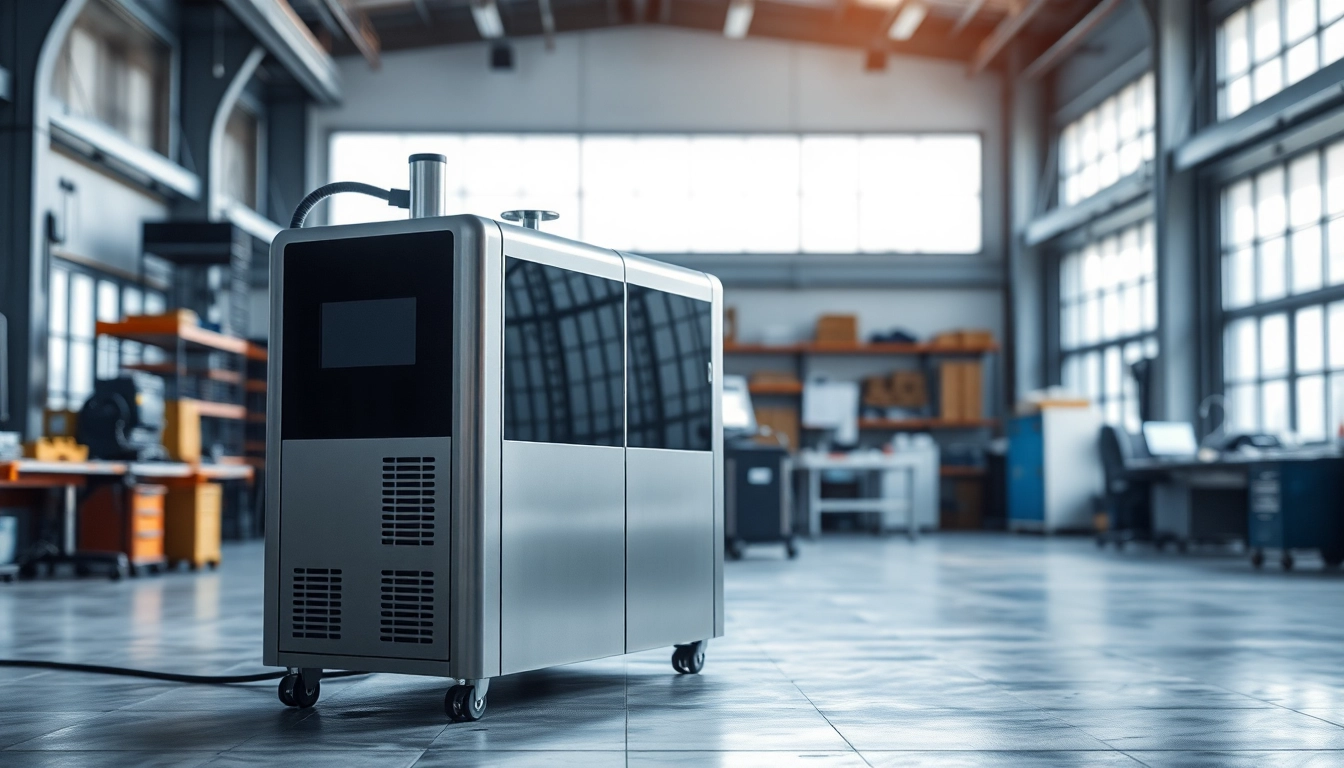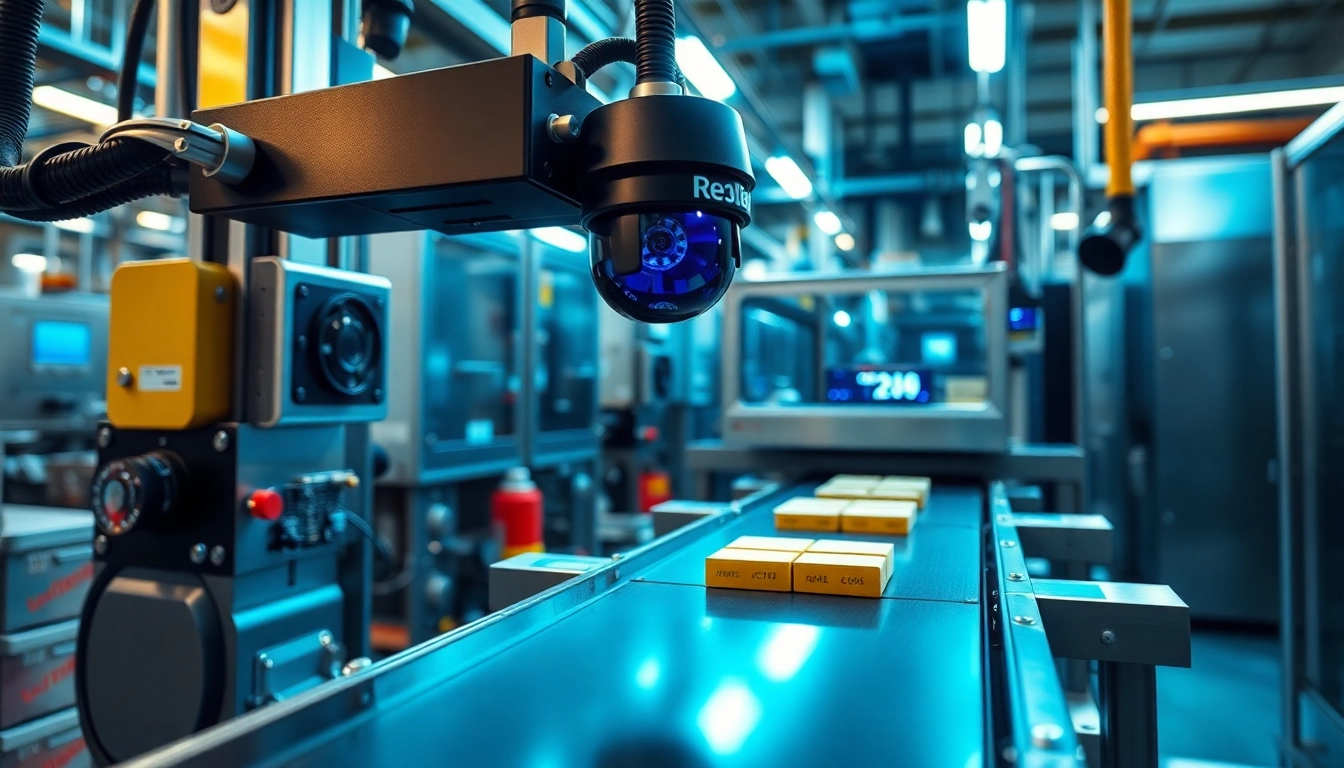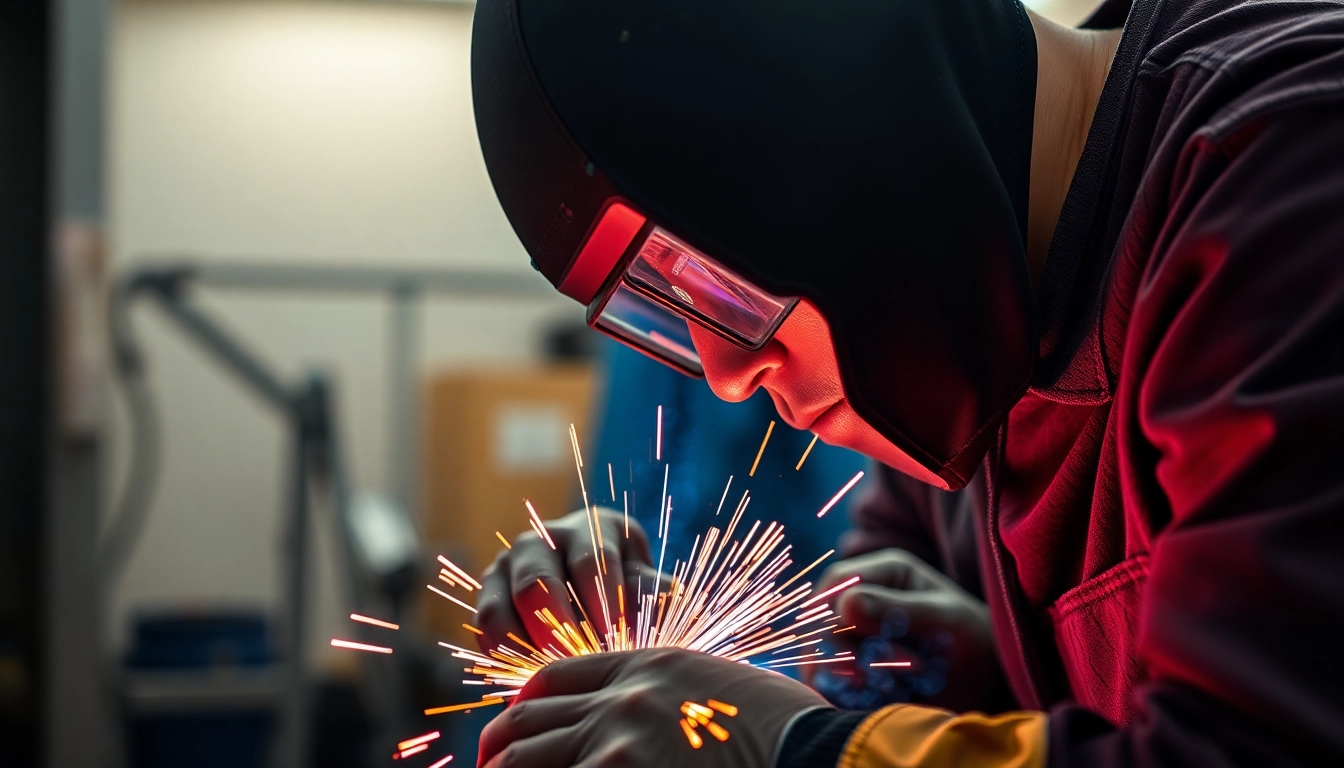Introduction to Laser Cleaning Machine
In the ever-evolving landscape of industrial cleaning technologies, the Laser cleaning machine has emerged as a transformative solution. This innovative technology leverages the precision and efficiency of laser systems to deliver effective cleaning results across various applications. By understanding the core principles and applications of laser cleaning machines, businesses can make informed decisions that enhance their operations and sustainability efforts.
What is a Laser Cleaning Machine?
A laser cleaning machine is an advanced device that uses a focused beam of laser light to remove contaminants, rust, and other unwanted materials from surfaces. Unlike traditional methods that often rely on chemicals or abrasive techniques, laser cleaning offers a non-contact and environmentally friendly solution. The technology is based on the principle of photonic energy, which vaporizes or blows away unwanted substances without damaging the underlying material.
How Laser Cleaning Machine Works
The operation of a laser cleaning machine involves several key steps. Firstly, the laser beam is emitted from a specialized source and directed towards the target surface. As the beam interacts with the contaminants, the high energy density causes these materials to either vaporize or undergo thermal shock. This process is meticulously controlled to ensure that only the unwanted substances are affected, leaving the substrate intact.
Furthermore, many laser cleaning machines incorporate advanced features, such as adjustable pulse duration and intensity levels, allowing operators to customize the cleaning process based on the material and the nature of the contamination. This versatility makes laser cleaning suitable for a wide range of applications, from delicate components in the aerospace industry to robust machinery in heavy manufacturing.
Applications of Laser Cleaning Machine
The versatility of the laser cleaning machine opens up numerous applications across diverse industries. Some prominent uses include:
- Metal Surface Cleaning: Ideal for removing rust, paint, and other coatings from metal surfaces, enhancing appearance and functionality.
- Mold Cleaning: Effectively cleans injection molds and dies, prolonging their lifespan and improving product quality.
- Historical Restoration: Used for delicate restoration of artworks and cultural heritage sites without damaging the original materials.
- Shipbuilding and Maintenance: Removes marine growth and old paint from vessels, contributing to maintenance and safety.
- Automotive Industry: Cleans parts in manufacturing and maintenance processes, ensuring precision and quality.
Benefits of Using Laser Cleaning Machine
The adoption of laser cleaning machines brings forth numerous advantages that align with modern industrial demands. Understanding these benefits can help organizations improve their cleaning processes and achieve better operational efficiency.
Environmental Advantages of Laser Cleaning Machine
One of the most significant benefits of using a laser cleaning machine is its positive impact on the environment. Traditional cleaning methods often involve the use of hazardous chemicals and generate excessive waste. In contrast, laser cleaning is a dry process that minimizes waste and eliminates the need for cleaning agents that can be harmful to the ecosystem.
Additionally, the precise targeting of lasers means that less energy is wasted compared to other cleaning methods, leading to reduced carbon emissions. This eco-friendly approach not only benefits the environment but also helps companies comply with increasingly stringent environmental regulations.
Cost Efficiency of Laser Cleaning Machine
While the initial investment in a laser cleaning machine may be higher compared to conventional methods, the long-term cost benefits can be substantial. Laser cleaning reduces labor costs as it often requires less manpower and time to achieve desired results. Furthermore, the reduction in waste and the elimination of chemicals lead to lower operational costs.
Additionally, by prolonging the lifespan of machinery and equipment through effective cleaning, organizations can avoid the high costs associated with equipment failures and downtime, ultimately leading to improved financial performance.
Enhancing Productivity with Laser Cleaning Machine
Efficiency is paramount in today’s competitive industrial environment. Laser cleaning machines are designed for high-speed operation, capable of covering large surface areas in a fraction of the time compared to traditional methods. This capability enables industries to streamline their processes and improve turnaround times.
Moreover, the precision of laser cleaning means that cleaning can occur without the need for thorough disassembly of machinery or equipment, further enhancing productivity. As a result, businesses can keep operations running smoothly while maintaining high standards of cleanliness and safety.
Choosing the Right Laser Cleaning Machine
Selecting the right laser cleaning machine is crucial for maximizing its effectiveness and ensuring that it meets specific operational needs. Several factors should be considered to ensure the right choice is made.
Factors to Consider when Selecting a Laser Cleaning Machine
When choosing a laser cleaning machine, businesses should evaluate several key factors:
- Application Requirements: Determine the specific cleaning needs based on the materials involved and the type of contaminants to be removed.
- Laser Type: Different types of lasers (e.g., fiber, CO2) offer varying degrees of effectiveness depending on the application. Understanding the nuances of each type can help in making the right choice.
- Power Output: The power of the laser affects the cleaning speed and effectiveness. Higher power typically enables quicker cleaning but may not be suitable for all materials.
- Mobility: Depending on the application, consider whether a stationary or portable machine would be more beneficial.
- Control Systems: Advanced machines may offer automated controls for precision work, which can improve efficiency.
Comparing Different Types of Laser Cleaning Machine
There are generally three main types of lasers used in laser cleaning machines: fiber lasers, CO2 lasers, and solid-state lasers. Each type comes with its own set of advantages and potential drawbacks. Fiber lasers, for instance, are known for their efficiency and compact design, making them ideal for many industrial applications. In contrast, CO2 lasers may offer better performance with certain materials such as plastics.
Understanding the different capabilities and limitations of various laser types will help businesses decide on the best option for their needs, based on their specific cleaning applications and operational constraints.
Understanding Specifications of Laser Cleaning Machine
It is imperative to comprehend the specifications of laser cleaning machines before making a purchase. Key specifications include:
- Wavelength: The wavelength of the laser affects its interaction with different materials.
- Pulsed vs. Continuous Wave: Pulsed lasers can offer greater control for delicate cleaning tasks, while continuous wave lasers often deliver higher power for faster cleaning.
- Cooling System: An efficient cooling system is vital for prolonged use, as it protects the laser from overheating during operation.
Reviewing these specifications ensures that the chosen machine aligns with the unique needs of an operation.
Best Practices for Operating Laser Cleaning Machine
To harness the full capabilities of a laser cleaning machine, it is important to adhere to best practices during operation. This section outlines essential guidelines for safe and effective operation.
Safety Guidelines for Laser Cleaning Machine
Safety should always be a top priority when operating a laser cleaning machine. Operators should wear appropriate protective gear, including safety goggles designed to block laser light, to prevent eye injuries. In addition, proper training should be provided to all personnel involved in the operation of the machine to avoid accidents.
Working in well-ventilated areas is also crucial, as some materials may produce harmful fumes when subjected to laser cleaning. Ensuring compliance with safety regulations and guidelines will foster a safer working environment.
Maintenance Tips for Laser Cleaning Machine
Regular maintenance is essential to keep a laser cleaning machine operating at peak efficiency. Operators should routinely check and clean the optics to ensure optimal laser beam quality. Dust and contaminants on lenses can compromise performance, leading to inferior cleaning results.
Scheduled inspections should include verifying the integrity of components, focusing systems, and cooling systems. Following the manufacturer’s maintenance guidelines will ensure a longer lifespan for the equipment.
Optimizing Performance of Laser Cleaning Machine
To maximize the effectiveness of a laser cleaning machine, operators should calibrate the system according to the specific requirements of the cleaning task. This includes adjusting the laser power, pulse duration, and speed of operation based on the materials being cleaned.
Operators should also monitor the outcomes of cleaning tasks, refining techniques as necessary. Data collection can provide insights into which settings yield the best results for different applications, enhancing overall efficiency.
Future Trends in Laser Cleaning Machine Technology
The landscape of laser cleaning technologies is rapidly evolving, driven by technological advancements and changing industry needs. Keeping abreast of future trends can help businesses stay competitive and efficient.
Innovations in Laser Cleaning Machine Design
Continuous research and development are leading to innovations in the design of laser cleaning machines. Compact and lightweight designs are becoming more common, making them easier to maneuver and incorporate into existing workflows. Additionally, advancements in laser technology are producing machines that are more energy-efficient and cost-effective, further enhancing their appeal.
Advancements in Laser Cleaning Machine Applications
The applications of laser cleaning machines are expanding into new industries and processes. Innovative uses such as cleaning in the medical field, aerospace components, and precision electronics are becoming more prevalent. As the technology matures, it is likely that even more specialized applications will emerge, providing even greater scope for businesses to benefit from laser cleaning.
The Role of Automation in Laser Cleaning Machine Operation
Automation is poised to play a significant role in the future of laser cleaning technology. Automated systems can improve precision, efficiency, and repeatability, making it easier to integrate laser cleaning into fully automated production lines. With advancements in artificial intelligence and machine learning, systems can also learn and adapt to different cleaning scenarios, optimizing performance over time.


